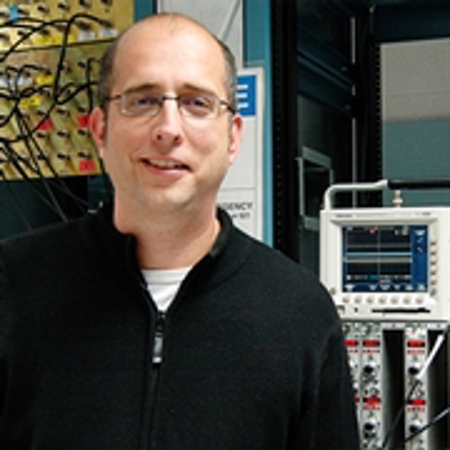Hendrik Schatz
University Distinguished Professor, Department of Physics & Astronomy
Location: 2006 Cyclotron Bldg
Phone: 517-908-7397
Email: schatz@msu.edu
Website: https://people.nscl.msu.edu/~schatz/
Bio
The goal of our experimental research program is to understand the nuclear processes that occur naturally in the cosmos. To that end, we take advantage of the capabilities of NSCL and other laboratories to produce the same exotic isotopes that are created in extreme astrophysical environments such as supernovae, hydrogen explosions on neutron stars and white dwarfs, and the crusts of neutron stars. By measuring the properties of these short lived isotopes we can address question such as: What is the origin of the heavy elements in nature made in the rapid neutron capture process (r-process)? Why do the current models for this process do not work? What powers the frequently observed x-ray bursts and what can the observations tell us about the astrophysical site? What are the processes in the crusts of neutron stars that convert ordinary nuclei into exotic isotopes beyond the limits of neutron stability? Why do these processes generate not enough heat to explain observations? These questions are addressed by carrying out different types of experiments. These include measurements of beta delayed neutron emission with the NERO detector developed by our group, using the new generation gamma ray detector array GRETINA to probe excited states of exotic nuclei that can be used to calculate reactions rates for X-ray bursts, and measuring the masses of very neutron rich nuclei needed in neutron star crust models using the S800 spectrometer and a set of specially developed micro channel plate and fast plastic detectors. A new direction are experiments using the low energy beams that will be provided in 2013 by the new ReA3 facility. Our group is involved in developing a high density gas jet target and a recoil separator system, and we are participating in a number of other projects that will take advantage of these beams. A focus area for the coming years will be to characterize and use the world unique beams provided by ReA3 for nuclear astrophysics research. Thesis projects are available in all these areas. Our experiments are not performed in isolation but are embedded into a network of astrophysical model calculations and astronomical observations supported by the Joint Institute for Nuclear Astrophysics (JINA) a multi institutional NSF Physics Frontiers Center. Graduate students in our group become part of JINA and participate in all stages of this process. The goal of JINA is to provide a fully interdisciplinary education that is a pre-requisite for a successful career in this field. While students go through the complete nuclear physics graduate course sequence, their education is complemented by participation in JINA schools (often held internationally), through research stays at JINA collaborating institutions in the US and abroad, and by carrying out astrophysical model calculations as part of their research, for example, to motivate their experiments, or to interpret their experimental results. Our group has a suite of astrophysical models that are available for use and further development at MSU. Alternatively collaborations with JINA partners in theoretical astrophysics can be used to carry out more sophisticated model calculations, such as multi-zone X-ray burst or multi-dimensional supernova simulations. In addition, students will form contacts with other JINA graduate students and postdocs at other institutions, as well with established researchers in nuclear physics, astrophysics, and astronomy. # Education: * 1997: Dr. rer. nat. (Ph.D.), University of Heidelberg * 1993: Diplom, University of Karlsruhe
Selected Publications
- Beta-delayed proton emission in the 100Sn region, G. Lorusso, et. al. Phys. Rev. C, 86 014313 (2012)
- Half-lives and branchings for β-delayed neutron emission for neutron-rich Co-Cu isotopes in the r-process, Hosmer, P. et al. Phys. Rev. C 82 (2010) 025806
- Heating in the Accreted Neutron Star Ocean: Implications for Superburst Ignition, S. Gupta, E.F. Brown, H. Schatz, P. Moeller, and K. L. Kratz, Astrophys. J. 662, 1188 (2007)
- Nuclear Astrophysics with Rare Isotopes, Schatz, H., Nuclear Physics A, Volume 827, Issue 1-4, pp. 26-33c. (2009)
- Nuclear masses in astrophysics, Schatz, H., Intl. Journal of Mass Spectrometry, Vol. 349-350, pp. 181-186. (2013)
- Strong neutrino cooling by cycles of electron capture and β– decay in neutron star crusts, Schatz, H., et al., Nature, Vol. 505, Issue 7481, pp. 62-65. (2014)
- Time-of-Flight Mass Measurements for Nuclear Processes in Neutron Star Crusts, Estrade, A. et al. Phys. Rev. Lett. 107 (2011) 172503 (arXiv:1109.5200)
